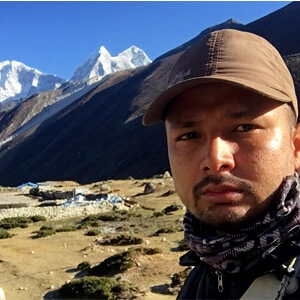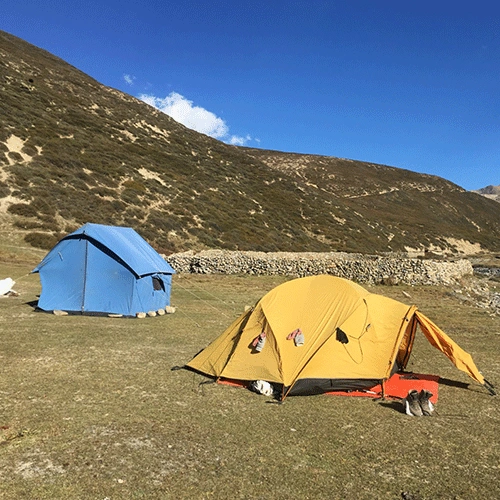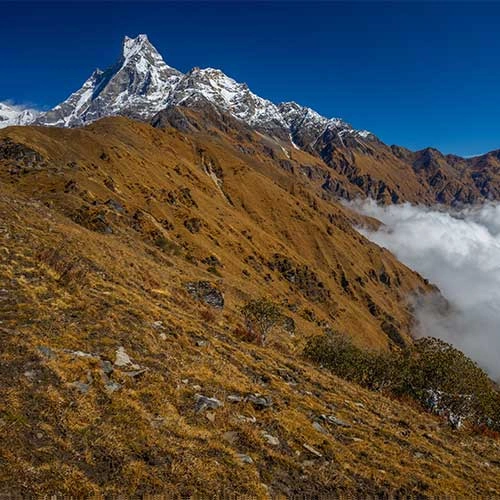The Precise Geographical Location of Mount Everest

Mount Everest stands with unparalleled splendor at a magnificent elevation of 8848.86 meters/29031.7 feet in the rugged Himalayan terrain. The sky-piercing, awe-inspiring summit of Everest is the ultimate hunt for adventurers who dare to reach the planet's highest point. However, grasping the pinnacle of the earth comes after knowing and understanding its precise whereabouts.
Mount Everest is located in Southern Asia within the eastern part of the Himalayas, spanning across multiple nations like Nepal, China, India, Pakistan, and Bhutan. This colossal mountain lies in the Mahalangur range, a subrange of the Himalayas which also houses three other eight thousand meter class mountains, Lhotse (8,516 meters/27,940 feet), Makalu (8,485 meters/27,838 feet), and Cho Oyu (8,188 meters/26,864 feet). The Mahalangur subrange is adjacent to the Tibetan Plateau (Qing Zang Gaoyuan). Tibetan Plateaus is known as the Roof of the World, and it is the largest and highest plateau on the earth.
The precise coordinates of Mount Everest have positioned it at 27,98 degrees North latitude and 86.92 degrees East longitude. The southern face of the mighty Everest falls under the Sagarmatha National Park, a UNESCO World Heritage Site in the Solukhumbu district. Inside Solukhumbu, it is situated in the Khumbu Pasang Lhambu Rural Municipality, under the administrative boundaries of Koshi Province in Nepal.
Mount Everest stands tall, high above the Himalayan range alongside other formidable peaks, creating a collective display of glorious landscapes. The neighboring colossal peaks are collectively identified as the Everest Massif.
Mount Everest is surrounded by many notable mountains in the massif with significant elevations. Lhotse (8,516 meters), the fourth highest mountain in the world, is located to the south of Everest, connected to it by the South Col. Changtse, a subsidiary peak of Everest, rises to 7,543 meters to the northwest of this mountain. Likewise, Pumori (7,161 meters) stands northwest of Everest with rugged ridges and steep faces. Nuptse (7,861 meters) and Cho Oyu (8,188 meters, the sixth highest peak in the world) are towards the west, and Ama Dablam (6,812 meters) is to the southwest of Everest. Makalu (8,485 meters), the fifth-highest mountain in the world, is positioned to the southeast, becoming an indispensable part of the Everest Massif.
Where is Mount Everest Located in Terms of Ecology?
The location of Mount Everest amidst the lofty Himalayas exposes it to extreme weather conditions. The temperature in Mount Everest is usually below the freezing scale. Even the Base Camp temperature can plummet to minus degrees Celsius in winter. As a whole, the Everest weather is characterized by frigid temperatures, strong high winds, heavy snowfall, sudden blizzards, and avalanches.
The layers of softer snow have piled up on the summit of Mount Everest with a fluctuating ratio. The level of snow is huge during the winter months, from late November to early March. This is because the winter snow gradually depletes with the arrival of spring. Conversely, the Mount Everest summit experiences low snow levels during the summer months from late May to early September. This time brings the monsoon in Nepal when precipitation is lower, and temperatures are warmer, even at higher altitudes.
The exosystem around the location of Mount Everest is resilient and is adapted to the biting cold climatic conditions. You can find a diverse range of unique plant and animal species adjusted to the harsh mountain environment. The vegetation usually found at the lower elevation regions is the forest of rhododendrons, pines, junipers, fir, birch, and flowers like primulas, edelweiss, blue poppies, Himalayan Columbines, etc.
As you go higher, the vegetation becomes sparse, and you can see the lichens, mosses, perennial grasses, forbs, and several wildflowers dominating the alpine landscapes. Regarding the fauna, the Everest region is a habitat of Himalayan tahrs (wild goats), elusive snow leopards, Himalayan black bears, red pandas, etc. Plus, the numerous bird species like Himalayan monal, snowcock, Himalayan vulture, Himalayan Giffron, spotted nutcracker, etc, add to the rich biodiversity and natural beauty of the Everest region. The abundant ecology of the mountainous surroundings mesmerizes the Everest trekking journey.
Ways to Approach the Mount Everest - From Nepal and Tibet
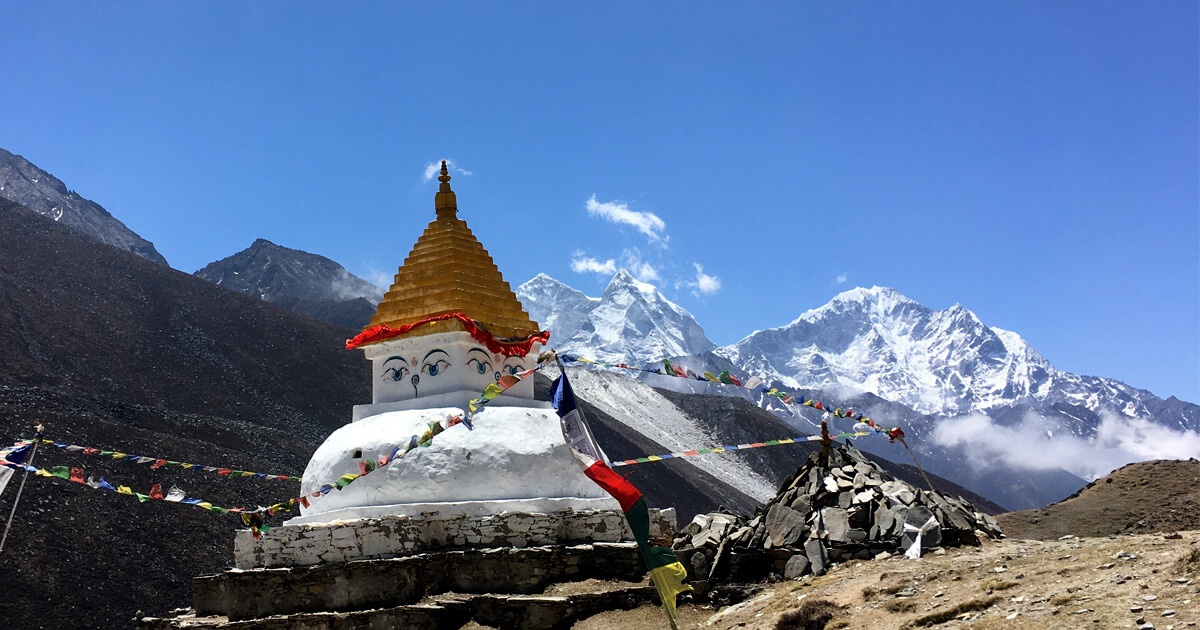
The majestic Mount Everest is located in the Khumbu Himalayan region of Nepal. Having said that, it is also a fact that the mountain lies at the border of Nepal and Tibet are shared by both. Mount Everest is located within the Sagarmatha National Park in the Everest Himalayan region in Nepal, while its location in Tibet is in the Tingri County of the Xigaze within the Qomolangma Nature Reserve. The towering presence of this mammoth mountain is characterized by the spread of its south face in Nepal and its north side in Tibet.
Since both the neighboring countries, Nepal and China, share the world’s highest mountain, Everest, they have offered access to its summit from either side. However, the experience of climbing Everest is different from one another, with distinctive perspectives and challenges from each side. The standard routes to access Everest are the South Col route from Nepal and the North Col route from Tibet. Regarding Everest climbing, Nepal is more popular due to its unrestricted access.
The major reason behind the difficulty in accessing the northern base of Mount Everest from Tibet is a permit restriction. Obtaining an Everest climbing permit from the north side is challenging as the government has imposed strict regulations to manage the number of climbers. Hence, this is the very reason why several records related to Everest are made through Nepal’s side from the southern route.
Meanwhile, China has paved an Asphalt highway connecting to the north base camp of Everest. Although this construction has ensured easy access to the trekkers, the ascent to the summit from the north ridge is still difficult compared to Nepal. Different factors account for this difficulty, such as the technicalities of the climbing routes, the duration of scaling the mountain, altitude acclimatization, and climbing limitations from the Chinese government. Furthermore, traveling up to Tingri County and crossing Rongbuk Glacier adds to the time and navigation challenges.
The south ridge from the Nepali side of Everest is relatively accessible, with fewer technicalities involved and less steep slopes. So, the primary and major route to the summit is the south route through Everest South Base Camp. On the south side of Everest, you need to climb from one camp to another till the fourth camp before making it to the top of the peak. On the north side, you will have to stop at the six different camps before a summit attempt.
Experiencing the Majesty of Everest From the Base Camp
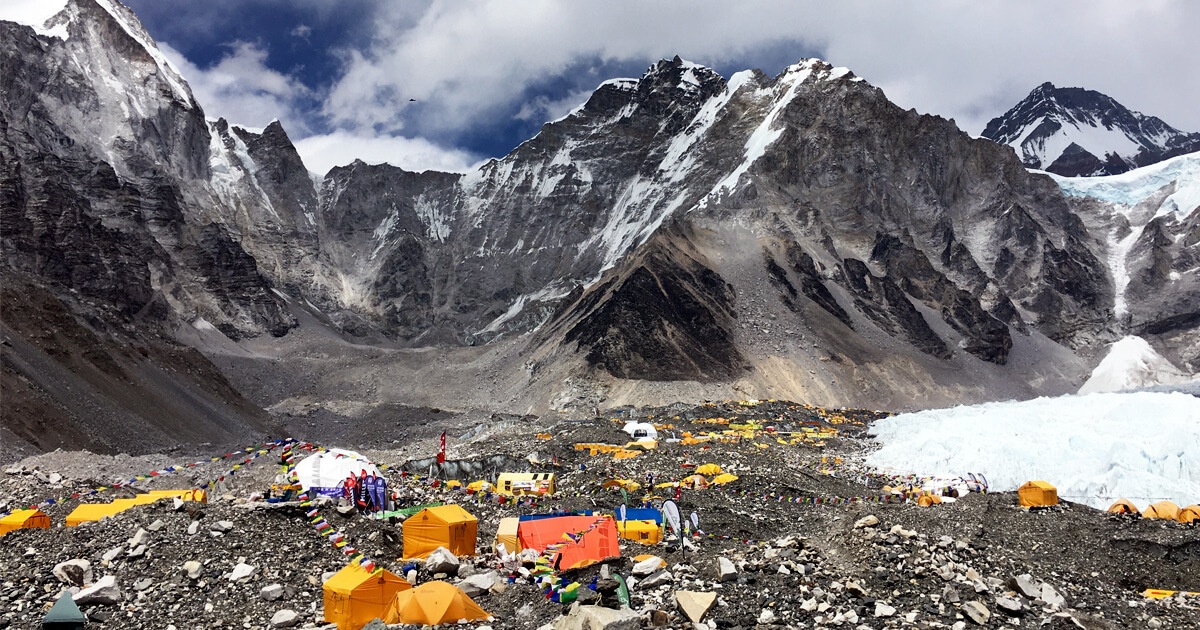
On the opposite sides of Everest lies two base camps, South Base Camp in Nepal at an altitude of 5,364 meters/17,598 feet, and North Base Camp in Tibet at a slightly higher elevation of 5,150 meters/16,900 feet. To talk about the South Base Camp of Everest from Nepal, the camp is approachable via trek, which usually begins from Lukla. Lukla is a gateway to the Everest region and a popular place for visitors to the Himalayas. The trekking distance to Everest Base Camp from this starting point is approximately 65 kilometers. It usually takes around 10-11 days to traverse through the rugged and winding mountainous trails to make it to the base camp before preparing for a summit push.
The base camp of Mount Everest on South Col is in the vicinity of Khumbu Glacier, serving as the starting point for mountaineers accessing the summit of Mount Everest through the southern route. The base camp of Mount Everest rewards you with the majestic presence of Everest itself, along with the view of nearby towering peaks. Moreover, the gorgeous views of the stunning Khumbu Glacier, rock piles, moraines, and Khumbu Icefall will leave you in awe. Anyone who can't make it to the top of this gigantic peak can still experience the grandeur of the high Himalayas from the base camp.
Time Taken to Scale the Everest
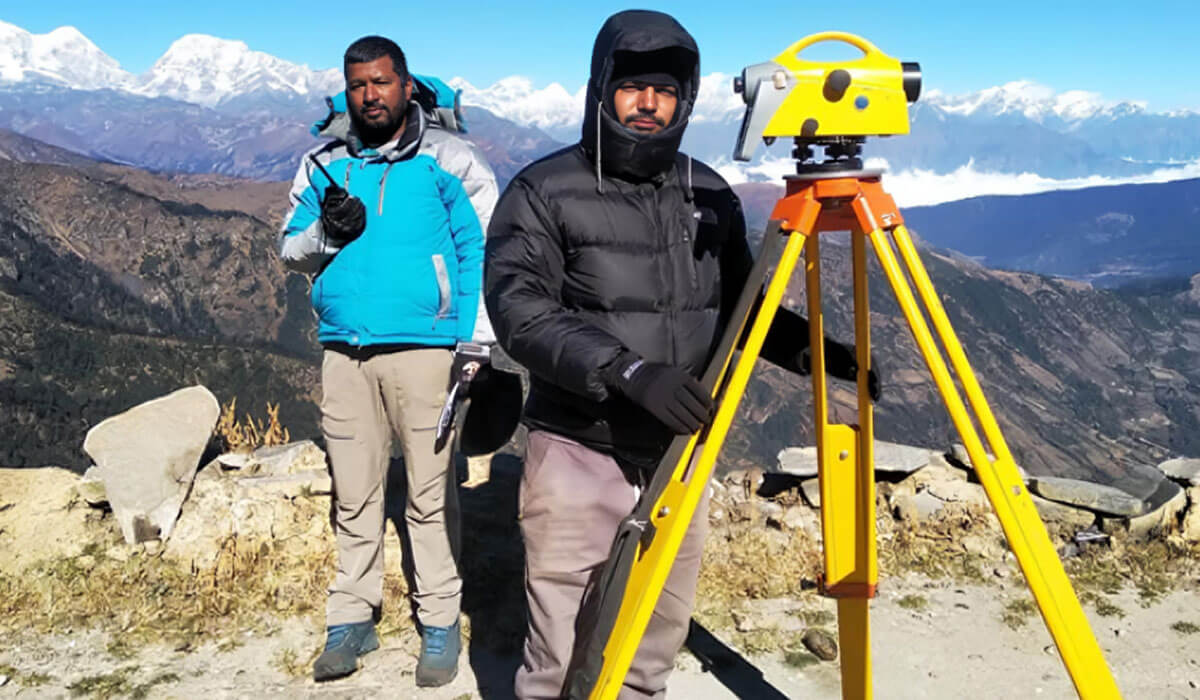
Climbing Mount Everest is an adventurous undertaking that demands proper training, adequate preparation, climbing experience, mountaineering skills and techniques, and many more. Conquering Mount Everest typically requires an approximate duration of about two months. The overall time taken to reach the top of this mountain hugely depends on several factors, such as the route taken, individual pace and fitness level, weather conditions, acclimatization and rest days, and many more.
Mountaineers reach the base camp of Everest by taking various routes from Lukla. You can reach Lukla by a thrilling 35-minute flight from Kathmandu or by driving from Kathmandu to Jiri or Salleri and begin trekking towards the Base camp. Generally, the trek to the Everest base camp takes approximately 12 to 14 days, including the acclimatization day, to adjust to the rising altitudes and stops to enjoy the magnificent views along the way.
The climbing phase from Base Camp to the summit of Everest can take around 6 to 8 weeks, including the high camps setup, acclimatization rotation, and summit push. The ascent to the summit of Everest involves traversing through four camps, each with its own unique set of challenges. After completing essential preparations and properly acclimatizing to the higher altitudes, climbers are ready to ascend to the summit of the mountain. They will attempt the summit push from the highest Camp IV. Achieving the summit and descending back to the base camp will take around 6 to 8 days. The total climbing duration can be more or less depending on the selected route and weather conditions.
Gain Insights On:
Different Routes to Everest Base Camp
Standard Everest Base Camp Trek
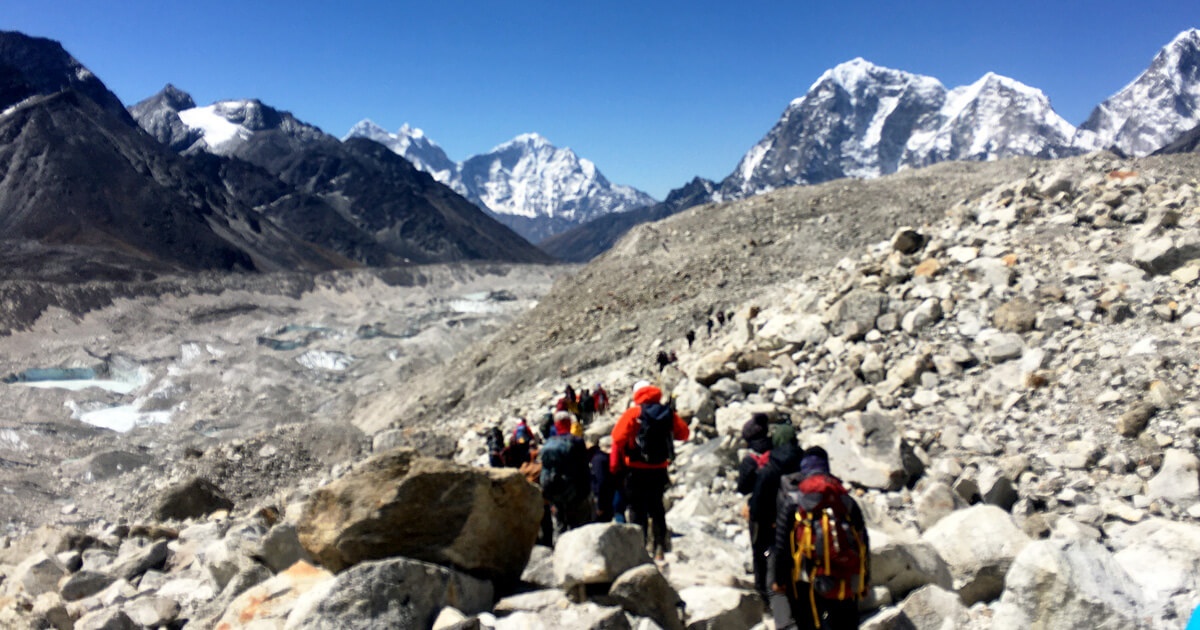
The Everest Base Camp trek is an adventurous undertaking through the core of the Khumbu region to the lap of the supreme Mount Everest. The classic or traditional Everest Base Camp trekking is usually completed in around 12 to 14 days back and forth to Kathmandu. The journey starts with a flight from Kathmandu that lands at Lukla, the beginning point of the trek. Then, following the meandering trails alongside the Dudh Koshi Riverbed, you will trek through the rich biodiversity of the Sagarmatha National Park. The trail leads you through the picturesque Sherpa villages like Phakding, Namche Bazaar, Tengboche, Dingboche, Thukla, Lobuche, and Gorakshep before climbing up to the Everest Base Camp.
You will spend a day acclimatizing at Namche Bazaar. This vibrant town is a popular stopover for trekkers with a breathtaking vista of the Himalayan mountains. You will also hike the Everest View Point to gaze upon the glorifying sight of Everest and surrounding peaks. While in the Tengboche village, you will visit the popular Buddhist monastery, which is also the oldest and biggest in the Everest region, Tyangboche Monastery. You can take in the peaceful ambiance of this sacred monument and explore its exquisite architecture and Buddhist paintings.
The EBC trek is a rewarding journey characterized by the captivating scenery of diverse Himalayan landscapes like lush rhododendron forests, terraced fields, rushing rivers, cascading waterfalls, alpine meadows, and spectacular mountains. Each step on the trail is blessed with gratifying views of closing-up snow-covered peaks such as Everest, Nuptse, Lhotse, Makalu, Ama Dablam, and more. Gradually, the trek paces up to the final Sherpa settlement of the Everest region, Gorakshep. Then, ascending alongside the Khumbu Glacier, the mind-blowing vista of Khumbu Icefall comes into view. Eventually, you will approach the classical Everest Base Camp at the foothills of the world’s highest peak. After descending to Gorakshep from Everest Base Camp, you will embark on an early morning hike to Kalapatthar. From the Kalapatthar viewpoint, you will enjoy the mesmerizing sunrise view illuminating the snowy Himalayas. Finally, you will descend all the way down to Lukla and take a return flight to the capital city.
Everest Base Camp and Gokyo Lakes Trek
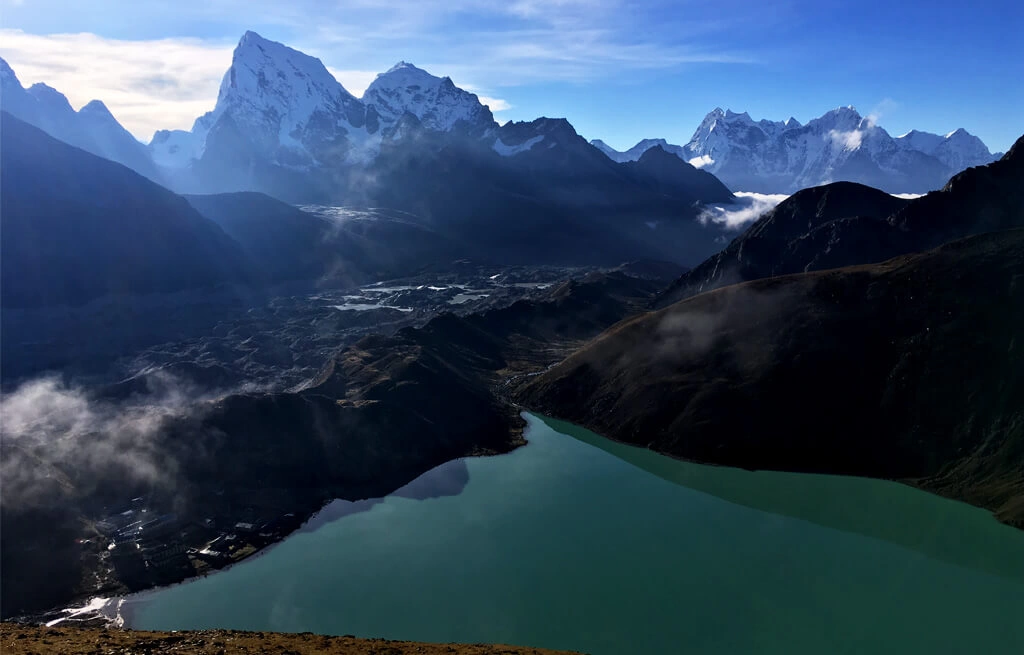
The Everest Base Camp and Gokyo Lakes trek typically span around 15 to 18 days. This journey combines two fantastic treks in the Everest region: the Everest Base Camp Trek and the Gokyo Lakes Trek. The harmonious blend of the world-renowned EBC trek and the off-the-beaten Gokyo Lakes trek via Cho La Pass crossing offers an optimal route to experience the highlights of the Khumbu region. During this beautiful journey, you can deeply soak into the rich culture, architectural heritages, and pristine wilderness of the highland regions.
The Everest Base Camp via Gokyo Lakes trek is a popular alternative to the standard EBC route. This trek involves traversing the regular route to Everest Base Camp, with a side trip to Gokyo Lakes on the way back. During the return journey, you will travel across the new Himalayan landscapes that were not traversed earlier. The depth of your natural and cultural immersion will surely rise while skipping the trodden path. The trekking adventure is a bit similar to the standard Everest Base Camp trek; however, besides reaching the Everest Base Camp, this alternate route also includes crossing the high pass Cho La, walking past the Ngozumpa Glacier (the largest Himalayan Glacier), exploring turquoise Gokyo Lake, and ascending the vantage point of Gokyo Ri. This awesome journey of crossing technical Cho La Pass before reaching Gokyo Lakes and exploring the hidden Gokyo Valley allows you to explore more rugged and secluded regions of the Himalayas.
The remarkable journey of the Everest Base Camp and Gokyo Lakes trek is an unmatched adventure experience. It takes you through picturesque, rugged Himalayan landscapes, iconic landmarks, and traditional Sherpa villages, introducing you to the pure and scenic natural beauty and unique culture of the remote mountainous region. Furthermore, navigating the challenging high mountain pass and breathtaking glaciers will place you under the test of your physical capabilities and mental resilience by pushing you to your limits.
Three Passes Everest Base Camp Trek
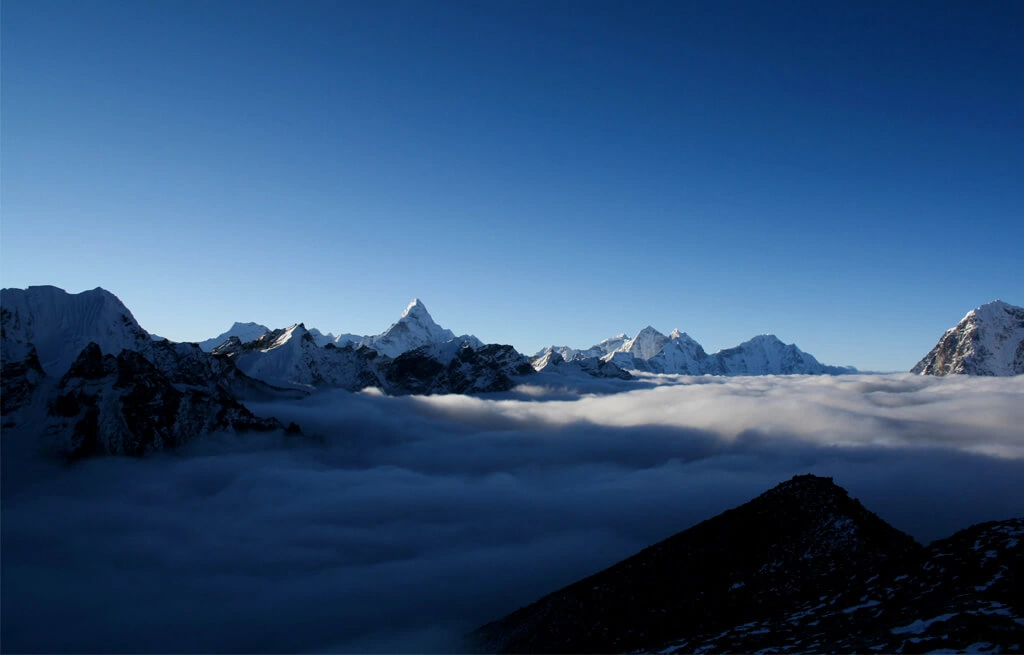
The adventurous journey of the Three Passes Everest Base Camp trek is usually completed in 16-20 days. It follows the same route as the classic EBC trek but includes the challenge of crossing three high passes: Kongma La, Cho La, and Renjo La. Three Passes Everest Base Camp trek also differs from the standard EBC trek in terms of extended duration and increased altitude at different points of the journey. Furthermore, the rich encounter with additional remote villages like Gokyo and Thame allows you to explore the wildest and quietest corners of the Everest region.
The Three Passes Everest Base Camp trek is a daredevil undertaking amidst the untamed beauty of the Everest region. It is a magnificent journey of appreciating the grandeur of the Himalayas while pushing your limits to the utmost extent. This popular trek in the Everest region is a thrilling exploration of the remote and rugged Himalayan landscapes by crossing three challenging high Himalayan Passes: Cho La (5,420 meters / 17,782 feet), Kongma La (5,535 meters / 18,154 feet), and Renjo La (5,360 meters / 17,560 feet). Navigation of three challenging mountain passes makes this version of the Everest Base Camp trek relatively difficult.
The adventurous Three Passes Everest Base Camp trek is mostly suitable for experienced trekkers, which requires excessive physical exertion and strong mental determination. You have to make several ascends and descends throughout the journey, and the routes leading to the passes are tricky, like steep ice, loose rocks, boulders, and snow slopes. Despite the challenges, the breathtaking views of the entire Khumbu Himalayas, Ngozumpa Glacier, Khumbu Glacier, and Gokyo Lakes are mind-blowing. Navigating all three passes over 5,300 meters while taking in the incredible view of alpine mountainous scenery offers an unparalleled trekking experience.
Everest Base Camp Three Passes is a journey of enthusiasm and revelation. During the Three Passes Everest Base Camp trek, you will follow the trails that will encircle the entire Everest region and, en route, encounter you to the Everest Base Camp. The view of majestic mountains such as Everest,Island, Mera, Lobuche, Ama Dablam, Makalu, Thamserku, Kangtega, Kusum Kanguru, Kongde Ri, Cho Oyu, Lhotse, Nuptse, and other adjoining mountains from the highest vantage point of Kalapatthar are rewarding. The untouched Gokyo Lakes are eventually unveiled as you follow the less-trodden Himalayan trails through the Gokyo Valley. Exploring the untamed nature of the Gokyo Valley and beholding the dramatic 360-degree panoramic views of the majestic snow-covered peaks from the Gokyo Ri enriches the Everest Base Camp Three Passes adventure, making it an unforgettable odyssey.
.webp)







